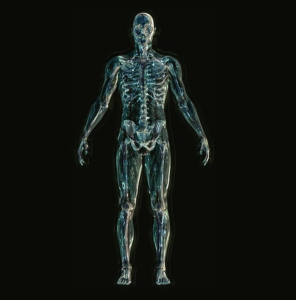Whiplash: Symptoms and causes and it’s treatment

Whiplash is a type of neck injury that occurs when the head is suddenly jerked forward or backward. This can happen due to a car accident, a fall, or even during contact sports. Whiplash can cause a variety of symptoms, including pain and stiffness in the neck, headaches, dizziness, and fatigue. In some cases, whiplash can also lead to blurred vision, memory problems, and difficulty concentrating. If you think you may have whiplash, it’s important to see a doctor right away for an accurate diagnosis and proper treatment.
There are several different ways to treat whiplash. In most cases, a combination of methods is used. These may include over-the-counter or prescription pain medication, ice or heat therapy, physical therapy, and massage. In some cases, surgery may be necessary to correct the underlying problem.
If you have whiplash, it’s important to follow your doctor’s instructions for treatment. With proper care, most people recover from whiplash within a few weeks to several months. In rare cases, however, the symptoms of whiplash may last for years. If you’re still experiencing pain and other symptoms after several months of treatment, your doctor may refer you to a specialist for further evaluation.
Whiplash: Symptoms and causes

Whiplash is a type of neck injury that can be caused by a car accident, a fall, or contact sports. It can cause pain and stiffness in the neck, headaches, dizziness, and fatigue. In some cases, it can also lead to blurred vision, memory problems, and difficulty concentrating. If you think you may have whiplash, it’s important to see a doctor right away for an accurate diagnosis and proper treatment.
There are several different ways to treat whiplash. In most cases, a combination of methods is used. These may include over-the-counter or prescription pain medication, ice or heat therapy, physical therapy, and massage. In some cases, surgery may be necessary to correct the underlying problem.
If you have whiplash, it’s important to follow your doctor’s instructions for treatment. With proper care, most people recover from whiplash within a few weeks to several months. In rare cases, however, the symptoms of whiplash may last for years. If you’re still experiencing pain and other symptoms after several months of treatment, your doctor may refer you to a specialist for further evaluation.
Risk factors of whiplash Injury and neck pain
Whiplash is a type of neck injury that can be caused by a car accident, a fall, or contact sports. It can cause pain and stiffness in the neck, headaches, dizziness, and fatigue. In some cases, it can also lead to blurred vision, memory problems, and difficulty concentrating. If you think you may have whiplash, it’s important to see a doctor right away for an accurate diagnosis and proper treatment.

There are several different ways to treat whiplash. In most cases, a combination of methods is used. These may include over-the-counter or prescription pain medication, ice or heat therapy, physical therapy, and massage. In some cases, surgery may be necessary to correct the underlying problem.
If you have whiplash injury and neck pain risk factors should be considered before seeking medical help as there are many treatments available for this condition depending on its severity.
The most common risk factor is being involved in a car accident, however, whiplash can also be caused by falls or contact sports. Other risk factors include age (being over 65 years old), having certain medical conditions (such as arthritis), and smoking.
If you have any of these risk factors, it’s important to see a doctor right away for an accurate diagnosis and proper treatment. With proper care, most people recover from whiplash within a few weeks to several months. In rare cases, however, the symptoms of whiplash may last for years. If you’re still experiencing pain and other symptoms after several months of treatment, your doctor may refer you to a specialist for further evaluation.
Prevention of whiplash Injury and neck pain

Whiplash injury is a neck problem caused by a sudden jolt to the head, often resulting from a car accident. Many whiplash injuries result in chronic neck pain that can be difficult to recover from. However, there are several things you can do to prevent whiplash injuries and neck pain. For example, wearing a seatbelt can help to cushion the blow in the event of an accident. In addition, adjusting your headrest to the correct height can help to minimize the risk of whiplash. Finally, paying attention to your posture and taking regular breaks to stretch your neck and shoulders can help to keep your muscles relaxed and reduce the chances of developing pain. By taking these precautions, you can help to prevent whiplash injuries and neck pain.
Whiplash injuries can be extremely painful and debilitating, making it hard to perform everyday activities. While most whiplash injuries occur as a result of car accidents, they can also occur due to physical abuse or other sudden impacts. Symptoms of whiplash include neck pain, shoulder pain, headaches, and dizziness. In severe cases, paralysis or even death can occur. Early diagnosis and treatment is essential for preventing long-term damage. One of the most common treatments for whiplash is the use of a cervical collar, which helps to immobilize the neck and prevent further injury. With prompt and proper treatment, most people make a full recovery from whiplash injuries. However, in some cases, chronic pain or disability can occur.
Types of Whiplash Injuries
Whiplash injuries occur when the head is suddenly and forcefully jerked forward or backward. The resulting neck pain and stiffness is typically known as whiplash associated disorders (WAD). While WAD is the most common type of whiplash injury, there are other types of whiplash that can occur depending on the mechanism of injury. For example, a neck sprain occurs when the ligaments are stretched or torn, while a neck strain occurs when the muscles or tendons are damaged. In severe cases, whiplash can also cause nerve damage or fractures. Treatment for whiplash typically includes pain medication, physical therapy, and rest. In some cases, surgery may be necessary to correct any underlying damage.
Whiplash is a type of neck injury that can occur when the head is suddenly and violently jerked forward or backward. The most common cause of whiplash is car accidents, but it can also be caused by falls, sports injuries, and other types of trauma. Whiplash usually affects the soft tissues of the neck, including the muscles, ligaments, and tendons. Symptoms of whiplash include neck pain and stiffness, headache, dizziness, fatigue, and blurred vision. In severe cases, whiplash can also lead to muscle spasms, nerve damage, and even neurological disorders. Most people with whiplash injuries recover completely with conservative treatment, but some may experience long-term symptoms.
How is Whiplash treated?

Whiplash is a neck injury that occurs when the neck bending forcibly forward or thrown backward. It can result in damage to the ligaments, muscles, and disks in the neck. Whiplash is most commonly seen in car accidents, but it can also occur during contact sports or falls. Symptoms of whiplash include neck pain and stiffness, headaches, dizziness, and fatigue. The first step in treatment is to diagnose whiplash. This is typically done through a physical examination and review of symptoms. Once whiplash is diagnosed, the next step is to alleviate symptoms. This may involve over-the-counter pain medication, ice/heat therapy, massage, or chiropractic care. In some cases, physical therapy may also be recommended. The goal of treatment is to reduce pain and help the individual return to their normal level of activity as soon as possible.
Whiplash is a type of neck injuries that occurs when the head is suddenly jerked forward or backward. The force of the movement can damage the muscles and ligaments in the neck, causing chronic pain and stiffness. Whiplash diagnosed using X-rays or MRI scans. Treatment typically involves physical therapy to strengthen the neck muscles and reduce stiffness. In some cases, pain medication or injections may also be necessary. Whiplash is a common injury that can occur after a car accident or during a sports injury. Early diagnosis and treatment are essential for preventing chronic pain and disability.
